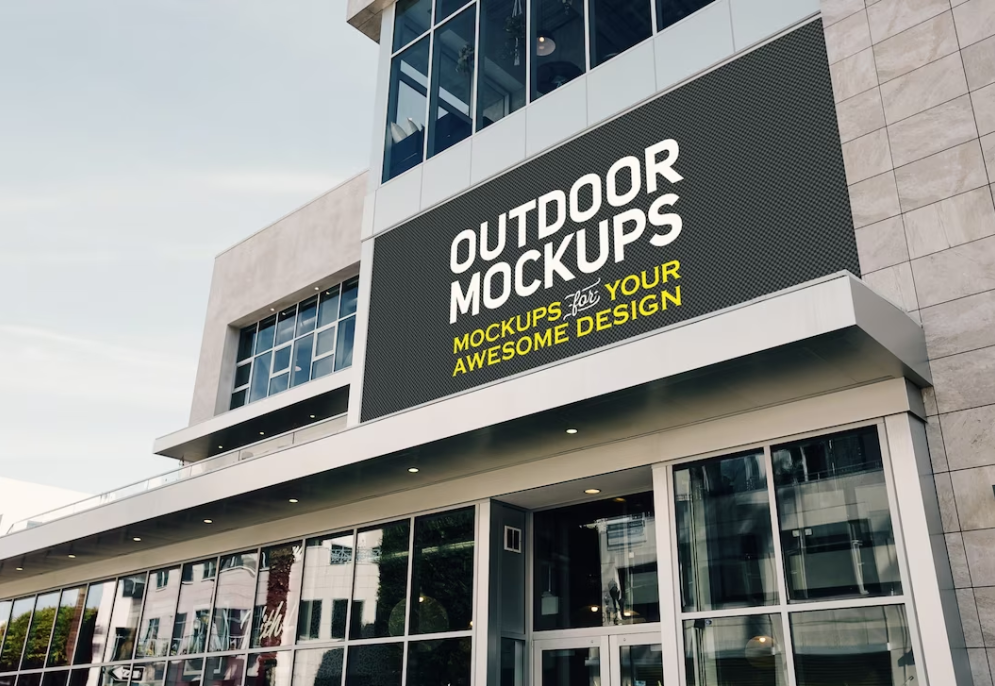The Role of Typography in Signage Design

Typography is a critical component of signage design that can make or break the success of a project. From the font choice to the layout, every aspect of typography plays an important role in communicating the desired message and making a lasting impression on the audience. In this blog post, we'll explore the role of typography in signage design and provide tips and tricks for using it effectively.
The first and most obvious aspect of typography in signage design is font choice. The font used in a sign can convey the tone and personality of a business, and it's important to choose a font that aligns with the brand's image. For example, a playful and quirky font might be suitable for a children's toy store, while a more traditional font would be appropriate for a law firm. It's also important to consider legibility and readability, as the main goal of a sign is to communicate information.
Another important aspect of typography in signage design is the layout. This includes the placement of text, the spacing between letters and words, and the size of the text. The layout should be structured in a way that makes the information easy to read and understand, regardless of the viewing distance or angle. For example, signs with smaller text may be difficult to read from a distance, and signs with text that is too close together can be difficult to distinguish.
In addition to font choice and layout, color also plays an important role in typography in signage design. The right color choice can enhance legibility and readability, while the wrong color choice can hinder it. For example, black text on a white background is a classic and legible choice, while red text on a green background might not be as easily readable. It's important to consider the background color and lighting conditions when selecting colors for a sign, as these factors can greatly impact the legibility of the text.
When it comes to using typography effectively in signage design, there are a few key tips and tricks to keep in mind. First, consider using sans-serif fonts for larger text and serif fonts for smaller text. Sans-serif fonts are typically easier to read at larger sizes, while serif fonts are easier to read at smaller sizes. It's also a good idea to limit the number of fonts used in a sign, as too many different fonts can be distracting and make the information difficult to read.
Another important tip is to ensure that the text is well-spaced. This includes both the spacing between letters and words and the spacing between lines of text. Proper spacing helps to enhance legibility and readability, and can also help to create a visual hierarchy, making it easier to distinguish between different pieces of information.
In addition to these tips, it's also important to consider the audience when using typography in signage design. For example, signs that are intended for elderly audiences or people with visual impairments should use larger text and bolder colors, while signs that are intended for children should use playful and colorful fonts.
Finally, it's important to consider the environment in which the sign will be viewed. This includes lighting conditions, background colors, and viewing angles. For example, signs that will be viewed in direct sunlight should use lighter colors and larger text, while signs that will be viewed in dim lighting should use darker colors and bolder text.
In conclusion, typography is a critical component of signage design that can greatly impact the success of a project. From font choice and layout to color and audience consideration, every aspect of typography plays an important role in communicating the desired message and making a lasting impression on the audience. By following the tips and tricks outlined in this blog post, you can use typography effectively in your next signage design project to create a clear, legible, and impactful sign.
--------------------------------------
ZapMyWork.com is your one-stop shop for all your freelance needs. We are an online marketplace that connects clients with skilled and talented freelancers from around the world. One of the things that sets us apart from other freelance marketplaces is our rigorous screening process. We carefully vet all of our freelancers to ensure that they have the skills and experience to deliver high-quality work, one project at a time. Let us know how we can help you today!
Recent Posts
-
04/26/2024Thriving Through Flexibility: How FlexiConsulting Found Success with ZapMyWork
-
04/19/2024Flourishing Home Trends: How "ZapMyWork" Became the Cornerstone of Our Interior Design Success
-
04/15/2024Weaving Success with ZapMyWork's Freelance Marketplace
-
04/12/2024Streamlining Project Management in Small Businesses: The ZapMyWork Experience with ClearVision Consulting
-
04/10/2024Transforming Toy Design with Electronics Engineering Freelancers: A Case Study on ToyInnovate
Store Address
Information
Copyright © 2022 - Present. ZapMyWork, LLC. All Rights Reserved




